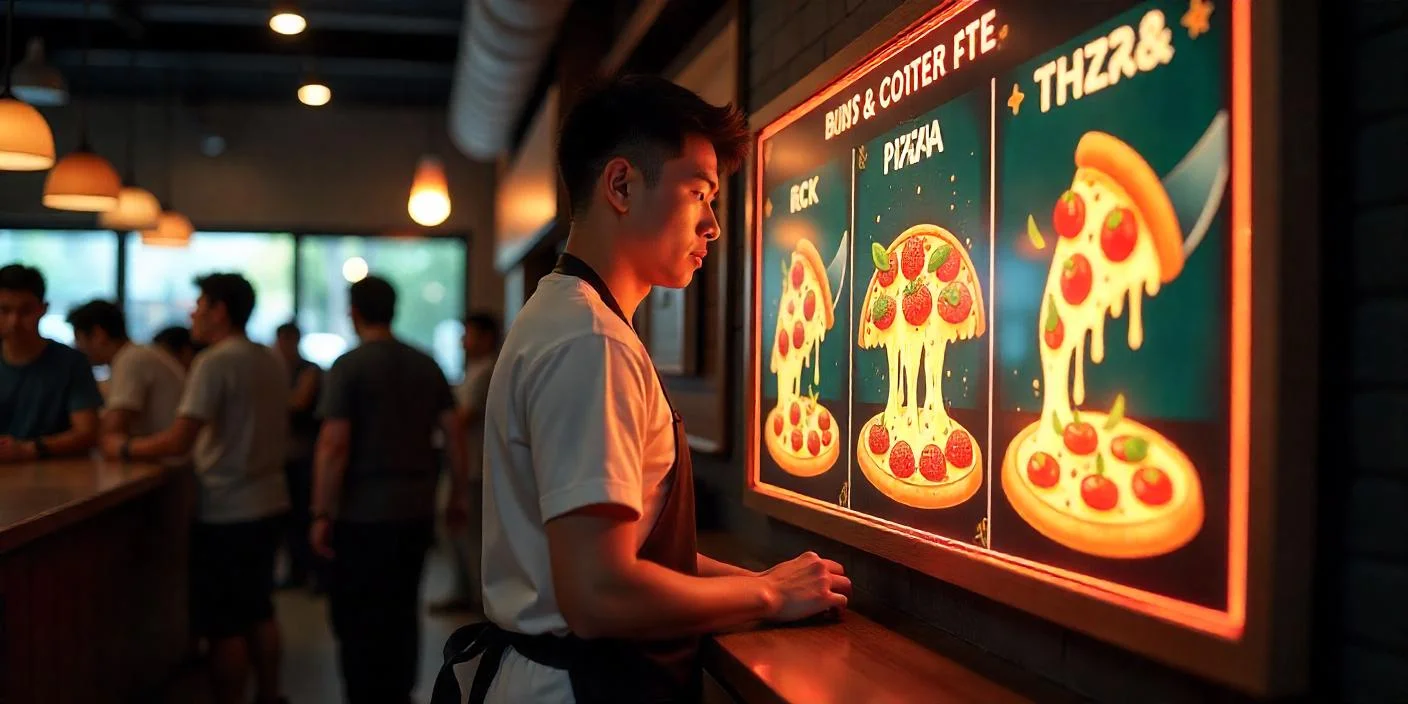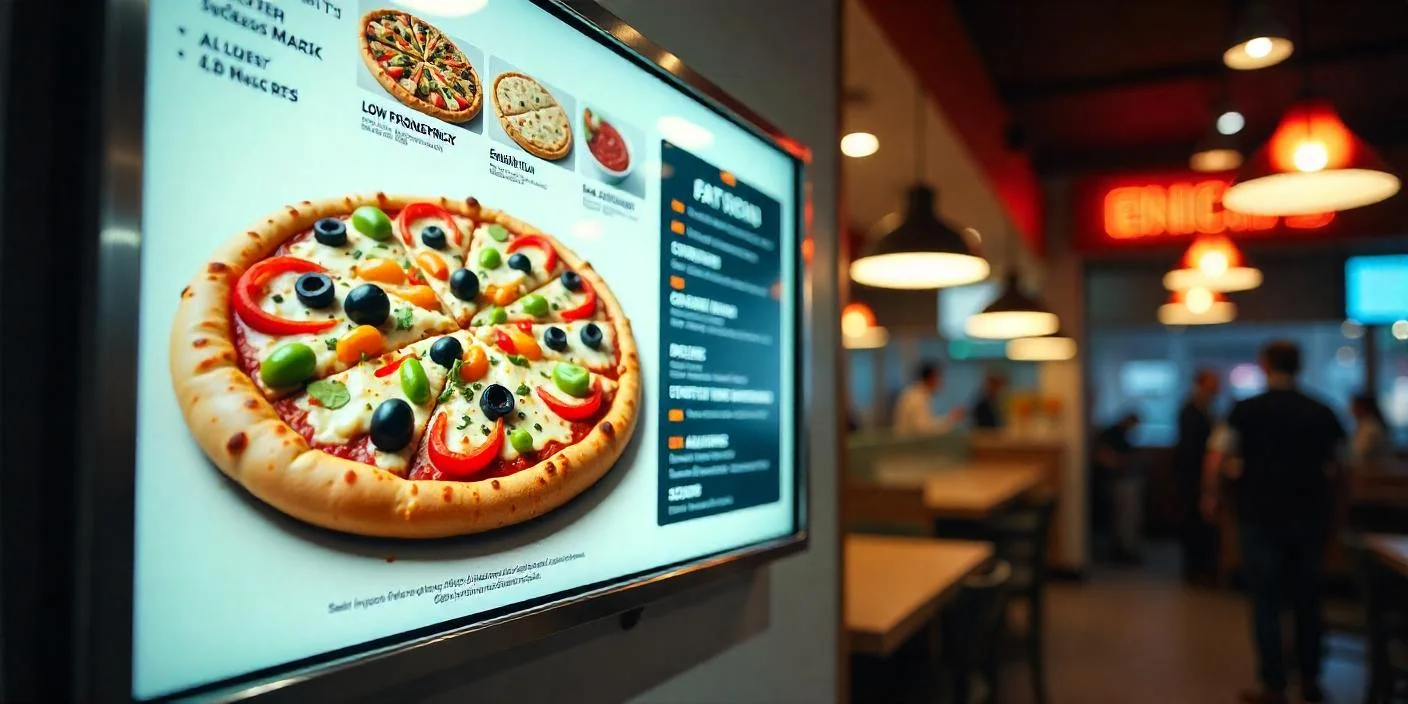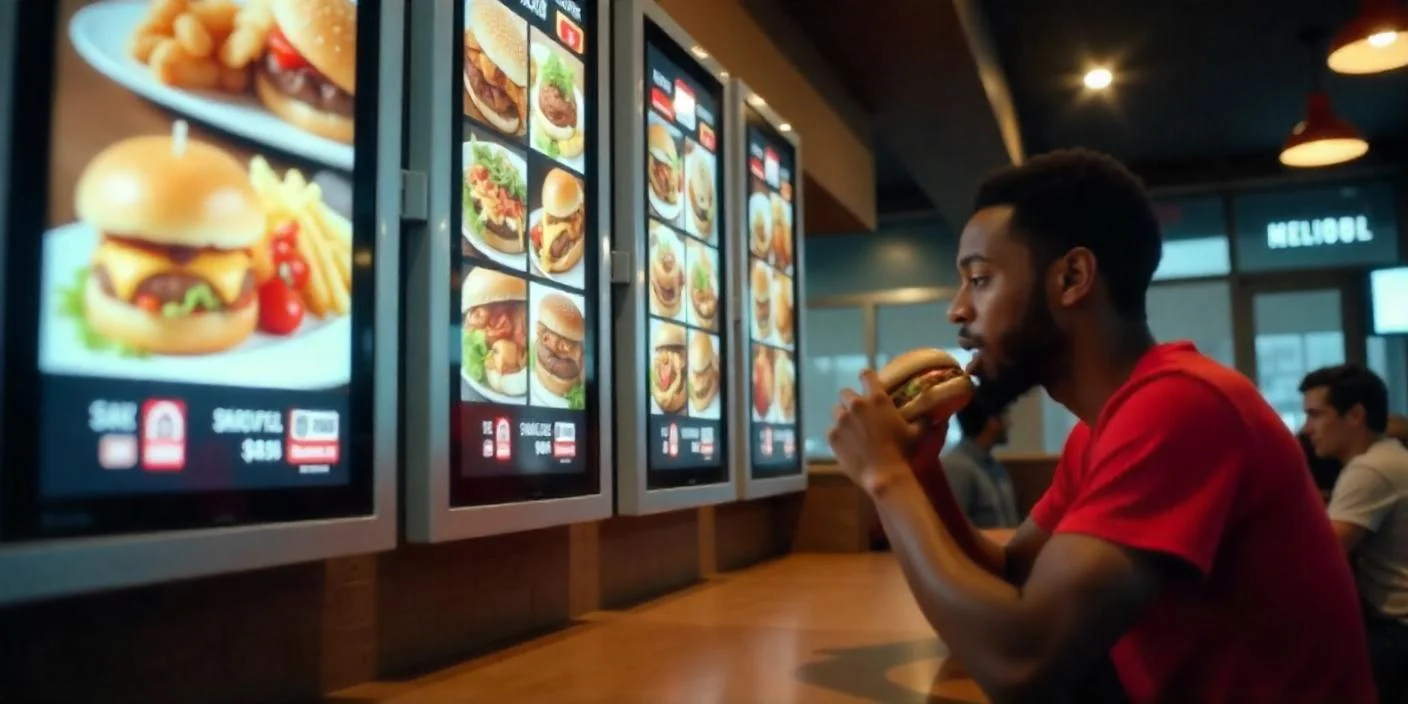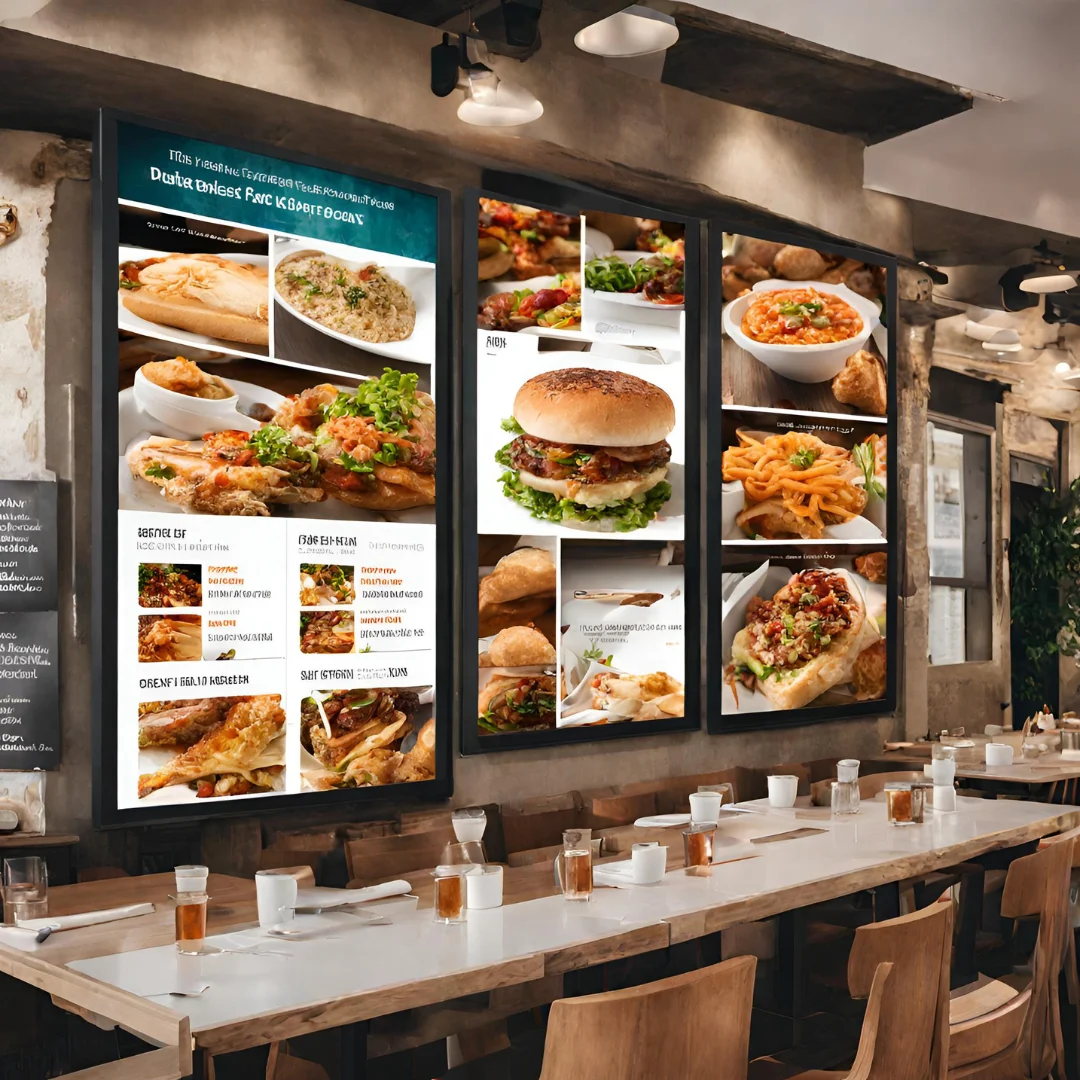Why Indoor Menu Boards and Displays Are Essential
The indoor menu boards and displays support the modern hospitality era as people demand instant information and attractive visuals in the era of diners. Whether it is restaurant-specific sleek digital menu boards or interactive touchscreen kiosks, the solutions provide a dynamic alternative to static paper menus and can be updated on the fly. With the help of the latest digital restaurant signage and digital menu solutions, companies automate their business processes, improve brand image, and increase customer satisfaction rates.
Evolution of Menu Presentation in the Hospitality Industry

The presentation of menus has evolved quite a bit, too – from chalk scribbles on the board outside the storefront to laminated paper menus and now, to completely digital restaurant menu boards. With the maturity of digital signage systems, restaurants have realized the effectiveness of interactive digital signage software in making experiences immersive. The current most effective indoor menu boards and displays feature high-definition graphics, animations, and even live data feeds as part of the bigger trend toward technology-based customer engagement.
Types of Indoor Menu Boards and Displays
Static Indoor Menu Boards
Printed vinyl or acrylic boards are not obsolete in small cafes and countryside bistros, as they provide a textural, craftsy impression.
Digital Indoor Menu Boards
LCD or LED panels are available in high brightness to provide vivid digital menu boards that scroll through dishes, promotions, and nutrition information with no jerky transitions.
Interactive Touchscreen Menus
Touch screens allow self-service menu navigation by category, filtering by dietary requirement and order customization, decreasing the perceived and actual wait time and staff workload.
Key Components of an Effective Indoor Menu Display
An effective indoor menu board uses clear fonts, high contrast color, and enticing graphics. Clear, sans-serif fonts, rational category hierarchy, and drool-inducing food photography will provide fast and easy understanding and promote high-margin product upsell.
Harnessing Visual Hierarchy in Menu Design
The eye is directed by strategic visual hierarchy:
- Headline Items: Largest font size dishes or specials.
- Supporting Details: Smaller text with descriptions and prices.
- Accent Elements: Color accents or symbols (e.g., chef’s hat on signature items) to attract attention.
Integrating Branding into Indoor Menu Displays
All the details, including the choice of font and color scheme, must reflect the brand of your restaurant. Logos, brand colors, and tone should be used consistently to create recognition and build trust, making your display menu boards smooth extensions of your decor.
Customization & Personalization Options
By using digital signage software, you can make the content personalized depending on the time of the day, level of loyalty, or local events. In the morning, display breakfast menus, then rotate to lunch specials at noon and dinner promotions by early evening, all controlled automatically with your digital signage content management system.
Benefits of Digital Indoor Menu Boards
Enhanced Customer Engagement
Video loops, animations, and moving digital menu boards are eye-catching and invite people to spend more time interacting.
Flexibility and Real-Time Updates
Make real-time changes to menus, prices, or offers on all screens without printing or manual changes.
Lowered Operation Expenses
Cut paper, printing, and labor costs, with returns on investment coming in the form of more sales and easier work processes.
Seamless Integration with POS & Inventory Systems

The best digital signage solutions are connected directly to POS and inventory databases and will automatically remove items that are out of stock and show real-time pricing- reducing errors and out-of-stock costs to a minimum.
Restaurants
Large-format restaurant menu boards are found in fine-dining and casual restaurants to feature chef specials and wine pairings.
Cafes and Coffee Shops
In cafe applications, compact indoor menu boards turn into seasonal beverages, pastries, and daily specials.
Fast-Food Chains
Indoor digital menu boards in the lobby, like drive-thru, enhance order decision time by suggesting combos.
Hotels and Resorts
Lobby kiosks and room-service tablets feature menus of all outlets, spa promotions, and events calendars.
Corporate Dining Facilities
Allergen icons and nutritional labeling make the process of meal selection more convenient for busy professionals.
Design Best Practices for Indoor Menu Boards and Displays
- Use a strict color palette to have focused attention.
- Choose high-quality images (1920×1080 or more) so that the picture is not pixelated.
- Before deployment, test the readability of the test at different distances and angles.
Accessibility Considerations
Indoor menu boards: Make sure they meet ADA requirements: high-contrast text, screen-reader compatibility on interactive screens, and captions on video content so all guests can access the information.
Common Pitfalls to Avoid
- Cluttered designs that intimidate the readers.
- Poor graphics resolution that compromises the brand quality.
- Irregular branding among screens.
Case Studies of Indoor Menu Board Success
An animated digital menu board template increased seasonal beverage sales by 25 percent at a national cafe chain. A small bistro decreased order time by a fifth after touchscreen interactive digital signage software allowed guests to sift through vegetarian choices easily.
Future Trends in Indoor Menu Displays

The future of digital menu solutions is getting increasingly engaging, with dynamic pricing and AI, voice-activated ordering interfaces, and augmented reality previews of dishes all on the way.
Take the Next Step with Nento
Digital signage solutions by Nento will help you transform your venue with the best digital signage software, hardware, interactive digital signage software, and support in the industry. To learn more about how our smart digital signage system can transform your customer experience, contact us to request a demo.
FAQs on Indoor Menu Boards and Displays
Q1. What are indoor menu boards?
Digital or fixed screens are installed within eateries to show menus, offers, and nutrition facts.
Q2. How do digital menu boards improve customer experience?
They provide up-to-date information in real-time, allow placing orders interactively, and use bright visuals to make decisions and wait less.
Q3. Are digital menu boards expensive?
The initial costs depend on the size of screens and software functions, but the savings in printing and a potential rise in sales usually pay off the investment.
Q4. Can I use existing TVs as indoor menu boards?
Most commercial-grade screens can be repurposed with digital signage player software and a CMS.
Q5. Do digital menu boards require maintenance?
They require periodic cleaning and software updates; automated monitoring reduces the number of manual checks.
Q6. Are there free templates available?
Most digital signage software companies, such as Nento, provide restaurants with free templates to get started with the design.
Q7. How often should content be updated?
Special: update daily; Menu cycle: update weekly; Thematic promotion: update seasonally.
Q8. What accessibility features are essential?
Large contrast text, screen-reader compatibility, closed captions, and tactile buttons on interactive systems.
Q9. Can digital menu boards integrate with loyalty programs?
Yes– API connections can be used to make customized offers and reward triggers depending on the customer profile.
Q10. What’s the best indoor menu board for a small cafe?
The low cost and the small size of the 32 43 touchscreens with cloud-based digital signage software make it affordable yet functional.





